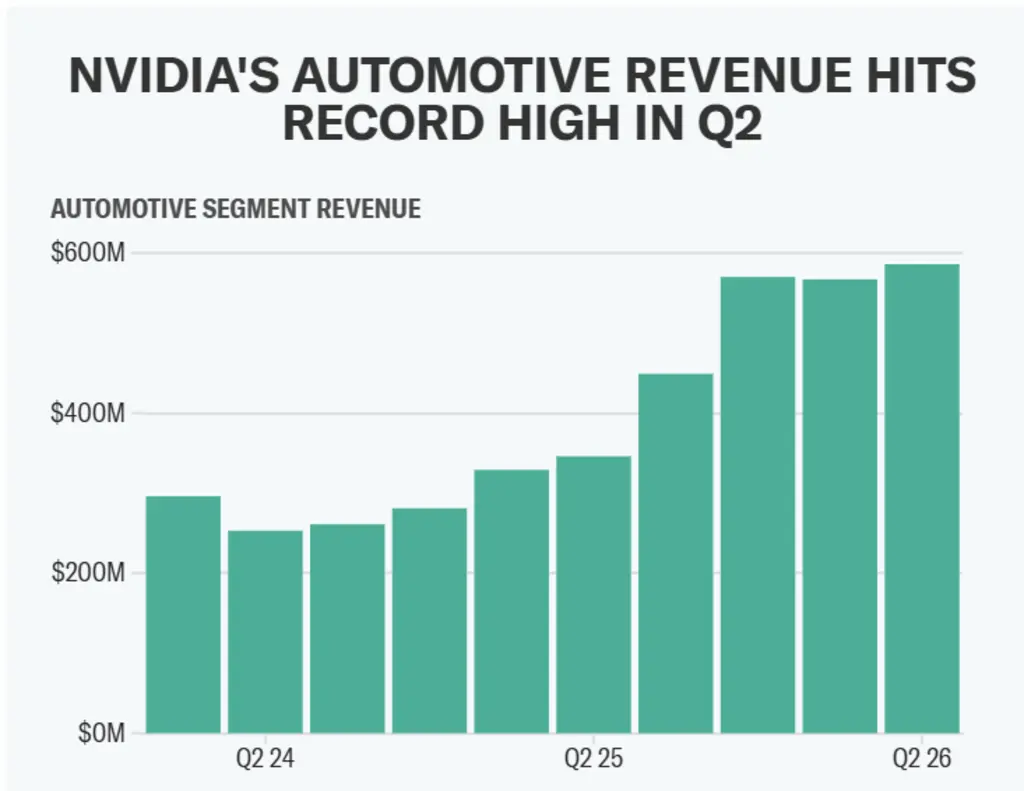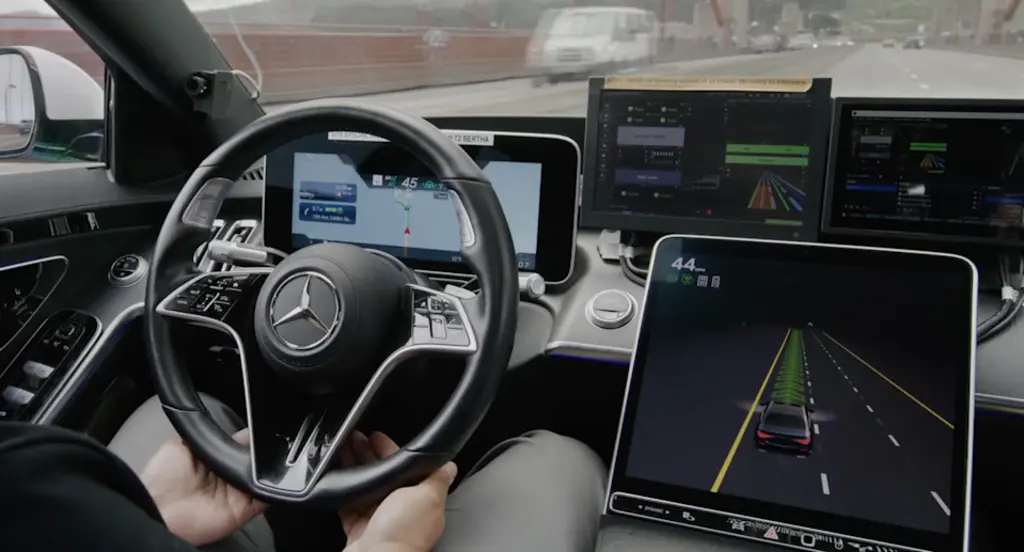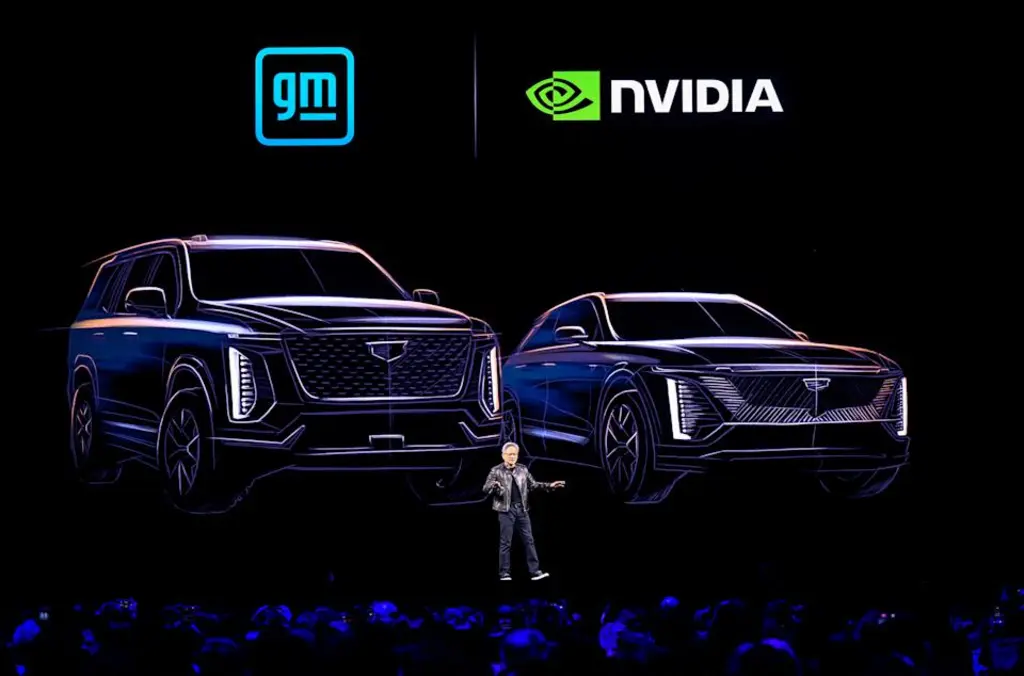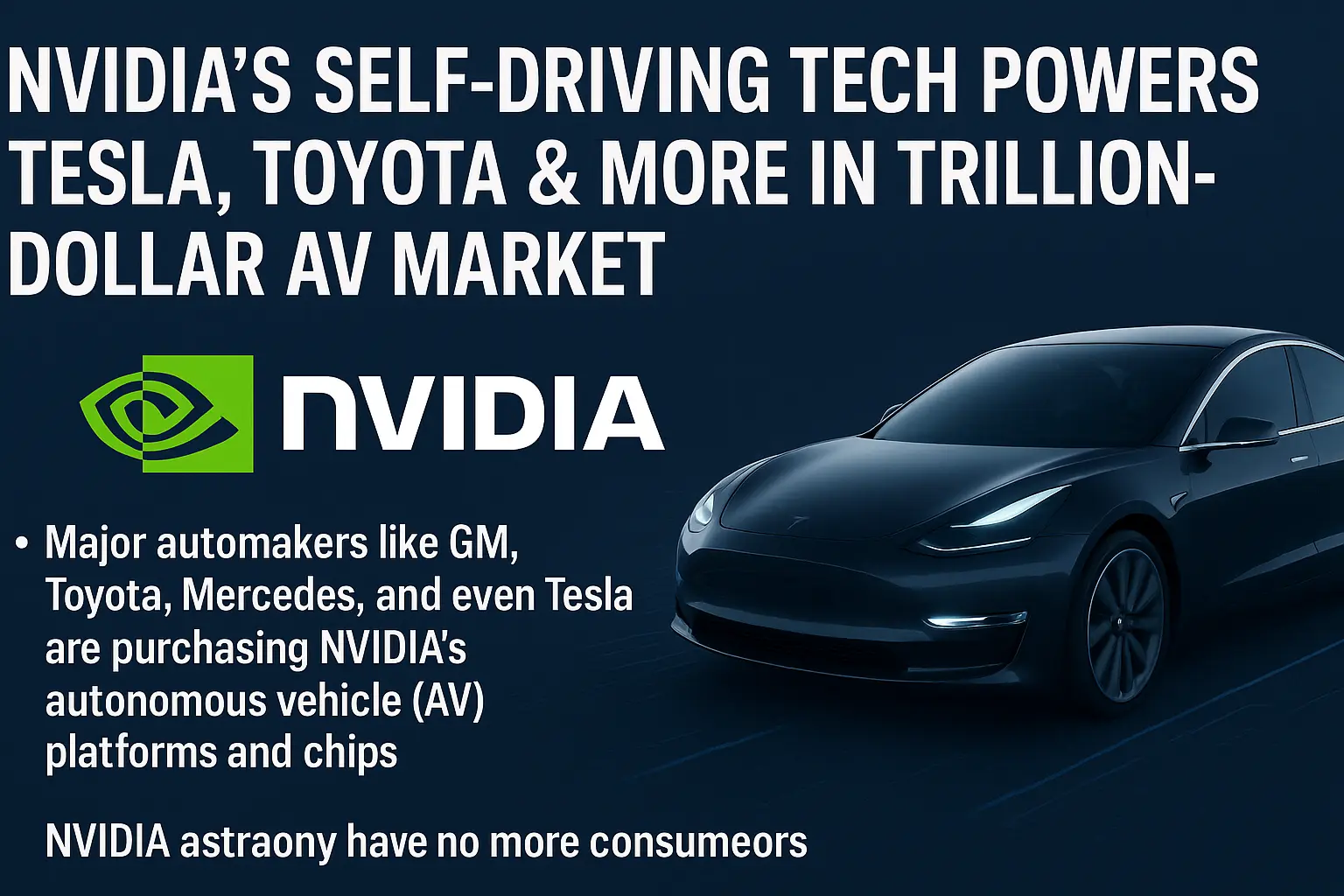Major automakers like GM, Toyota, Mercedes, and even Tesla are purchasing Nvidia’s autonomous vehicle (AV) platforms and chips.
While Nvidia’s blockbuster data center business is grabbing the headlines, its growing automotive segment is also advancing rapidly — and is gearing up for a big year.
In the second quarter of fiscal year 2026, Nvidia’s automotive division generated $586 million in revenue, marking a 69% increase compared to the previous year. According to Nvidia, this growth is primarily driven by its self-driving solutions.
CFO Colette Kress noted that the company has also started shipping its Drive AGX Thor system-on-chip (SoC), the successor to its current Orin-based self-driving platform.
“The arrival of Thor aligns with the industry’s shift towards vision, language, model architecture, generative AI, and higher levels of autonomy. Thor is our most successful robotics and AV computer to date,” Kress said during the earnings call. “Thor will power our full-stack Drive AV software platform — which is already in production — improving vehicle safety and autonomy, while also opening up multi-billion dollar revenue opportunities for Nvidia.”

Essentially, Nvidia’s “full-stack” solution means that it combines hardware — like the new Drive AGX Thor chips — with software such as DriveOS to deliver advanced driver assistance features in next-gen vehicles.
In an announcement earlier this year, Automotive Vision reported that Nvidia is collaborating with Toyota, the world’s biggest car manufacturer, for the integration of self-driving capabilities.
In fact, Nvidia’s platform is already being used by companies like Mercedes-Benz, Volvo, China’s BYD, and device maker Foxconn to enhance their autonomous driving capabilities.

Towards the end of last year, CEO Jensen Huang stated that Nvidia’s automotive business would bring in $5 billion in revenue this fiscal year and is on its way to becoming a trillion-dollar industry.
This isn’t just because of the DRIVE platform.
Nvidia’s GPU chips are also being used in Tesla’s supercomputers. Now, with Tesla scaling back its Dojo supercomputer project, the EV maker is expected to rely even more on Nvidia chips to train its autonomous vehicle models.
The convergence of supercomputing and robotics is emerging as one of the next major frontiers in AI. Huang refers to this as “physical AI,” where physical machines — like cars or robots — interact with the real world using artificial intelligence. Think autonomous vehicles or factory-floor robots.
At this year’s CES, Huang described the AV “revolution” and physical AI as likely the first multi-trillion-dollar opportunity in robotics — and emphasized that Tesla is a key player in it.

In an interview after the Q1 earnings in May, Huang said,
“We do a lot of business with Tesla and xAI. We’re going to build many more computers together. Elon Musk’s self-driving car and the Optimus robot — these are world-class, groundbreaking projects.”
Recently, Tesla expanded its robotaxi trials by 50% in Austin, Texas, and is planning to launch in other cities too — although with safety drivers still in place. Nvidia chips are used to train Alphabet’s Waymo for its vast AI models so as to maintain a significant league in the robotaxi space.
